Balcony vegetable gardening is an excellent way for urban citizens to grow their fresh produce, even with limited space. Whether you’re a complete beginner or looking to refine your ability to flourish greenery, this guide will walk you through the essentials of starting and maintaining a successful balcony vegetable garden. From choosing the right plants to maximizing space and ensuring optimal growth conditions, you’ll find everything you need to transform your balcony into a prolific, productive sanctuary.
Balcony Vegetable Gardening for Beginners
Balcony vegetable gardening for beginners is an accessible and rewarding way to grow fresh produce in small urban spaces. Even with limited space, a balcony can be transformed into a productive mini-garden with the right planning and care. Start with easy-to-grow vegetables such as tomatoes, peppers, herbs, and lettuce, which thrive in containers. Use pots, hanging baskets, and vertical planters to maximize your space.
Ensure your plants receive enough sunlight, ideally six to eight hours a day, and water them consistently. With a little effort, you can enjoy homegrown vegetables and the satisfaction of nurturing your own garden right at home.
Choosing the Right Plants for Your Balcony Garden
1. Understanding Your Climate and Light Conditions
Before starting your balcony garden, it is essential to understand your local climate and the light conditions of your space. Different vegetables require differnet amounts of sunlight, and knowing your balcony’s exposure can guide your plant selection. South-facing balconies receive the most sunlight, ideal for sun-loving vegetables like tomatoes, peppers, and cucumbers. In contrast, north-facing balconies may be more suitable for shade-tolerant plants such as leafy greens, radishes, and herbs. Assessing your climate helps you choose plants that can adapt to your specific weather conditions, ensuring a successful harvest.
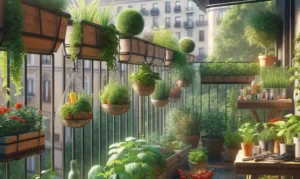
2. Best Vegetables for Small Spaces
When selecting vegetables for your balcony garden, consider those that are well-suited to small spaces. Cherry tomatoes, dwarf beans, and compact varieties of cucumbers are excellent choices. Herbs like basil, parsley, and mint also grow in containers and can be grown year-round. Additionally, consider growing root vegetables like radishes and carrots in deep containers. These plants are not only manageable in smaller spaces but also provide excellent sustainability, making the most of your limited gardening area.
3. Companion Planting
Companion planting involves growing certain plants together to promote growth, deter pests, and maximize space. For instance, planting basil near tomatoes can improve flavour and block harmful insects. Similarly, beans and peas can be grown alongside carrots and radishes to provide natural support and improve soil fertility through nitrogen fixation. Understanding which plants benefit each other can help you design a more efficient and productive balcony garden.
Essential Tools and Supplies for Balcony Gardening
1. Containers and Pots
Choosing the right containers is crucial for the health and productivity of your balcony garden. Look for pots and containers with good drainage to prevent waterlogging and root rot. Fabric grow bags, plastic pots, and ceramic containers are popular options. Ensure the size of the container matches the root requirements of your plants. For instance, deep containers are ideal for root vegetables, while shallow pots work well for herbs and leafy greens. Hanging baskets and window boxes can maximise vertical space and add aesthetic appeal.
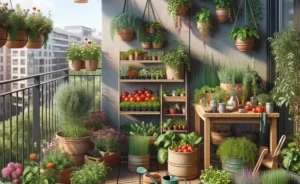
2. Soil and Fertilizers
The quality of your soil significantly impacts plant health and yield. Use a high-quality potting mix that retains moisture yet provides adequate drainage. Many commercial potting mixes are enriched with essential nutrients, but adding organic compost can further enhance soil fertility. Fertilizers, whether organic or synthetic, are vital for providing necessary nutrients. Slow-release fertilizers can be mixed into the soil at planting time, while liquid fertilizers can be applied during the growing season to boost growth and productivity.
3. Watering Tools and Techniques
Efficient watering is essential for balcony gardening, where plants in containers can dry out quickly. A watering can with a narrow lip helps deliver water directly to the soil without splashing onto leaves, reducing the risk of disease. Self-watering containers are a convenient option, especially for busy gardeners. Drip irrigation systems can automate watering and ensure consistent moisture levels. Mulching the soil surface with organic materials like straw or wood chips can also help retain moisture and reduce the frequency of watering.
Preparing Your Balcony for Gardening
1. Assessing Space and Layout
Before planting, evaluate the available space on your balcony to determine the best layout for your garden. Measure the dimensions of your balcony and consider the weight limits to avoid overloading. Plan the arrangement of your containers to ensure each plant receives adequate sunlight and has room to grow. Group plants with similar water and light requirements together. Utilizing vertical space with shelves, trellises, and hanging pots can maximize your growing area and create a visually appealing garden.
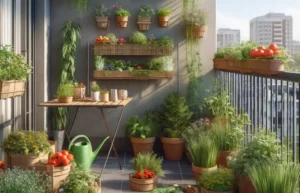
2. Vertical Gardening Solutions
Vertical gardening is a great way to optimize limited space and grow a variety of vegetables on your balcony. Use trellises and stakes to support climbing plants like beans, peas, and cucumbers. Wall-mounted planters and vertical garden kits can hold multiple pots, allowing you to grow more plants without occupying floor space. Hanging baskets are perfect for trailing plants like strawberries and herbs. Vertical gardening not only increases your growing capacity but also adds greenery and beauty to your balcony.
3. Safety Considerations
Ensuring the safety of your balcony garden is crucial, especially if you live in a high-rise building. Secure all containers and structures to prevent them from tipping over or being blown away by strong winds. Avoid placing heavy pots on railing edges where they could fall and cause injury. If using large containers, distribute their weight evenly to avoid overloading a single spot. Regularly inspect your setup to ensure everything remains stable and safe, providing a worry-free gardening experience.
Planting and Caring for Your Vegetables
1. Seed Starting vs. Transplants
Deciding whether to start from seeds or use transplants depends on your preference and the vegetables you choose to grow. Starting from seeds is cost-effective and offers a wide variety of options. However, it requires more time and patience. On the other hand, transplants provide a head start, especially for slow-growing plants like tomatoes and peppers. They are more convenient for beginners and can lead to quicker harvests. Consider a mix of both methods to enjoy the benefits of each.
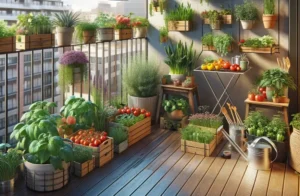
2. Planting Techniques
Proper planting techniques are essential for healthy growth and high sustainability. When planting seeds, follow the depth and spacing instructions on the seed packet. For transplants, gently remove them from their pots and place them in pre-dug holes, ensuring the roots are well-covered. Firm the soil around the plants to eliminate air pockets. Water thoroughly after planting to help establish the roots. Mulching around the base of the plants can help retain moisture and suppress weeds, promoting healthy growth.
3. Routine Care and Maintenance
Regular care and maintenance are key to a prosporous balcony garden. Water your plants consistently, keeping the soil moist but not waterlogged. Fertilize according to the needs of your plants, typically every 2-4 weeks. Trim and pinch back plants to encourage bushy growth and remove any diseased or dead leaves. Monitor your plants for signs of pests and diseases, taking prompt action to address any issues. Regularly check for adequate sunlight and adjust the placement of your containers as needed.
Dealing with Pests and Diseases
1. Common Balcony Garden Pests
Even in a balcony garden, pests can become a nuisance. Common pests include aphids, spider mites, whiteflies, and caterpillars. These pests can damage leaves, stems, and fruits, affecting plant health and productivity. Regularly inspect your plants for signs of pest infestation, such as discolored or deformed leaves, webbing, and tiny insects. Early detection and intervention are crucial to prevent widespread damage.
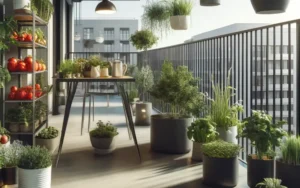
2. Organic Pest Control Solutions
Organic pest control methods are safe and environmentally friendly. Introduce beneficial insects like ladybugs and predatory mites to your garden to control pest populations naturally. Neem oil and insecticidal soaps are effective against a wide range of pests and can be applied directly to affected plants. Homemade remedies like garlic spray and diatomaceous earth can also deter pests. Physical barriers such as netting and row covers can protect your plants from larger pests like birds and caterpillars.
3. Preventing and Treating Plant Diseases
Plant diseases can spread quickly in a confined space like a balcony garden. To prevent diseases, practice good hygiene by removing fallen leaves and waste regularly. Water your plants at the base rather than overhead to avoid wetting the leaves, which can promote fungal growth. Use disease-resistant plant varieties whenever possible. If you notice signs of disease, such as spots, mold, or wilting, remove and dispose of the affected parts ASAP. Fungicides and bactericides can be used as a last resort to treat severe infections.
Harvesting Your Vegetables
1. Knowing When to Harvest
Knowing the right time to harvest your vegetables ensures peak flavour and nutritional value. Each vegetable has specific signs that indicate it is ready for harvest. For instance, tomatoes should be fully coloured and slightly soft to the touch. Leafy greens like lettuce and spinach can be harvested once they reach a suitable size. Root vegetables such as carrots and radishes should be gently pulled from the soil when they reach the desired diameter. Regular harvesting encourages continuous production.
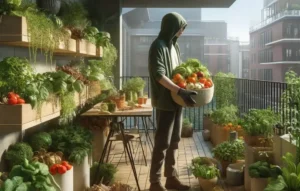
2. Harvesting Techniques
Proper harvesting techniques can extend the life of your plants and promote further growth. Use clean, sharp tools like scissors or trimming shears to cut vegetables, minimizing damage to the plant. For leafy greens, harvest the outer leaves first, allowing the inner leaves to continue growing. When harvesting fruits like tomatoes and peppers, gently twist or cut them from the vine. Be mindful of the plant’s structure and avoid pulling or plucking, which can cause damage.
3. Post-Harvest Care
After harvesting, proper post-harvest care ensures your produce stays fresh and lasts longer. Wash vegetables under cool running water to remove dirt and pests. For leafy greens, soak them in a bowl of water to crisp them up before storing in the refrigerator. Root vegetables can be stored in a cool, dark place or in the refrigerator, depending on the type. Regularly check your stored produce for signs of spoilage and use them promptly to enjoy their fresh flavour and nutrients.
Maximizing Sustainability and Extending the Growing Season
1. Succession Planting
Succession planting is a technique used to maximise sustainability by planting crops in intervals, ensuring a continuous harvest throughout the growing season. After harvesting early-season crops like radishes and lettuce, replant the same area with different vegetables. Fast-growing plants like bush beans and spinach are ideal for succession planting. This method keeps your balcony garden productive and allows you to enjoy a variety of vegetables over an extended period.
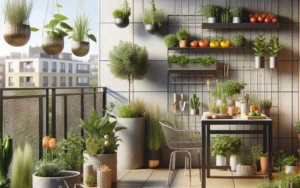
2. Season Extension Techniques
Extending the growing season allows you to enjoy fresh produce beyond the typical growing period. Use season extension tools like row covers, cloches, and cold frames to protect plants from frost and cold weather. Planting heat-loving vegetables in containers that can be moved indoors during cooler months can also extend your growing season. Greenhouses and mini-greenhouses are excellent options for maintaining optimal growing conditions and protecting plants from extreme weather.
3. Crop Rotation and Soil Health
Practising crop rotation helps maintain soil health and reduces the risk of pests and diseases. Rotate the types of vegetables you plant in each container every growing season. For example, after growing tomatoes in a container, plant leafy greens or root vegetables in the same container the following year. This prevents soil consumption and minimises the buildup of pests and diseases that target specific plant families. Adding organic compost and amendments between plantings can also improve soil fertility and structure.
Troubleshooting Common Problems
1. Dealing with Limited Sunlight
Limited sunlight is a common challenge in balcony gardening, especially in urban environments. Choose shade-tolerant vegetables like lettuce, spinach, and herbs that can thrive in partial sunlight. Reflective surfaces like white walls and mirrors can help increase light availability. Position your containers to receive the maximum possible sunlight, moving them as needed to follow the sun’s path. Grow lights can also supplement natural light, providing the necessary illumination for healthy plant growth.
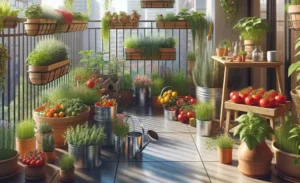
2. Overcoming Space Constraints
Maximizing space in a small balcony garden requires creativity and efficient use of available area. Utilize vertical gardening techniques with trellises, wall-mounted planters, and hanging baskets to grow more plants without taking up floor space. Stackable planters and tiered plant stands are excellent for accommodating multiple containers in a compact area. Intercropping, or planting different crops together in the same container, can also help maximize space and improve plant health.
3. Handling Extreme Weather Conditions
Extreme weather conditions, such as heatwaves, heavy rain, and strong winds, can pose challenges for balcony gardens. During hot weather, provide shade with umbrellas, shade cloths, or move containers to a cooler spot. Mulch the soil to retain moisture and reduce evaporation. In heavy rain, ensure your containers have proper drainage to prevent waterlogging. Secure your containers and structures to protect them from strong winds. Bringing portable plants indoors during extreme conditions can also safeguard them from damage.
Summary
Balcony vegetable gardening is a rewarding hobby that brings fresh produce to your home and a sense of accomplishment. By choosing the right plants, using appropriate tools, and following best practices for care and maintenance, even beginners can enjoy a bountiful harvest. Whether you have a small balcony or a larger outdoor space, the principles outlined here will help you make the most of your urban garden.
FAQ
Q1: What are the easiest vegetables to grow on a balcony?
The easiest vegetables to grow on a balcony include cherry tomatoes, lettuce, radishes, and herbs like basil and parsley. These plants are compact, grow quickly, and require minimal care.
Q2: How often should I water my balcony garden?
Watering frequency depends on the plant species and weather conditions. Generally, check the soil moisture daily and water when the top inch feels dry. During hot weather, plants may need watering once or twice a day.
Q3: Can I grow vegetables year-round on my balcony?
Yes, you can grow vegetables year-round by selecting appropriate plants for each season and using season extension techniques like grow lights, cold frames, and indoor containers.
Q4: What should I do if my plants are not getting enough sunlight?
If your plants lack sufficient sunlight, try moving them to a sunnier spot, using reflective surfaces to increase light, or supplementing with grow lights. Choose shade-tolerant plants if sunlight is consistently limited.
Q5: How can I prevent pests from damaging my balcony garden?
Prevent pests by practicing good hygiene, using organic pest control methods, and introducing beneficial insects. Regularly inspect your plants for pests and take prompt action to address infestations.
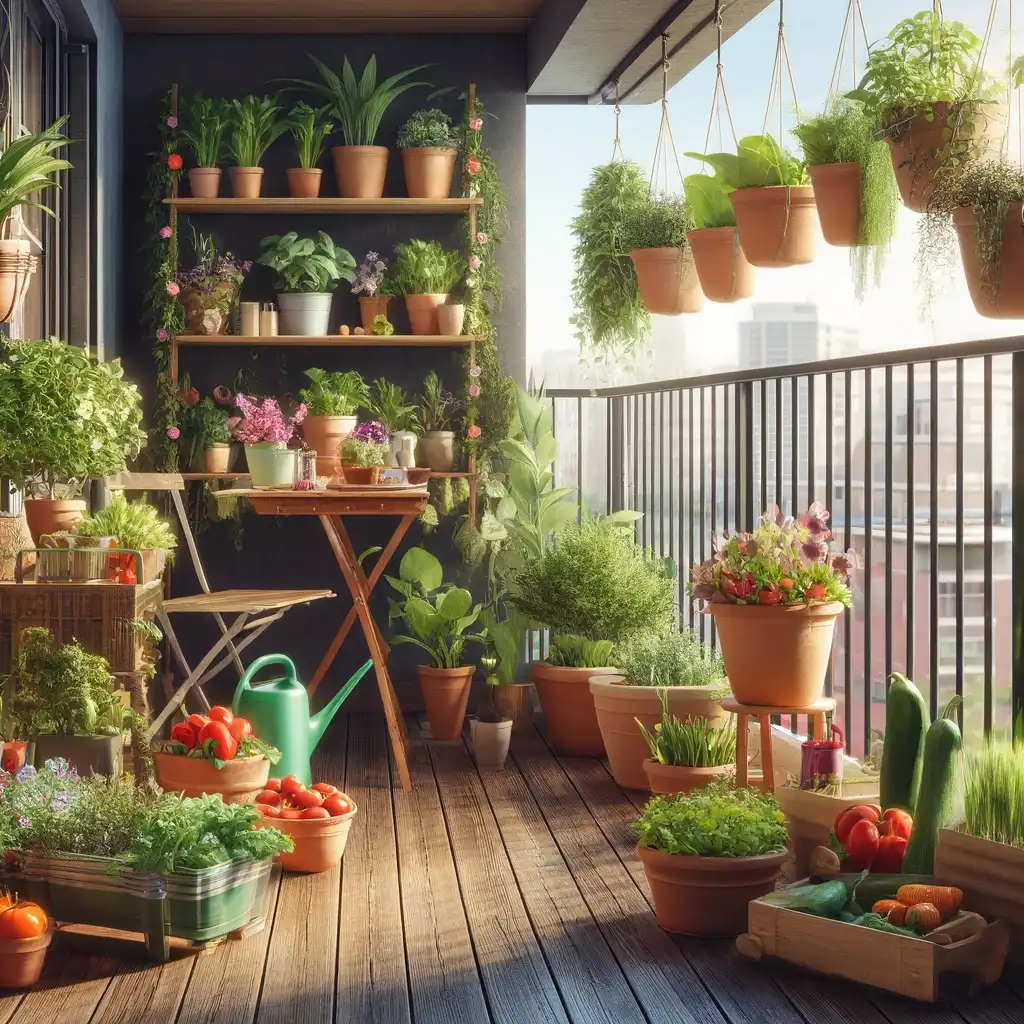
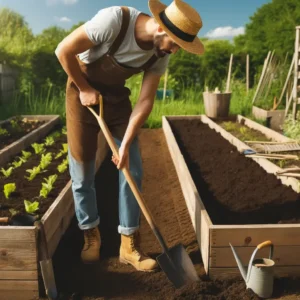
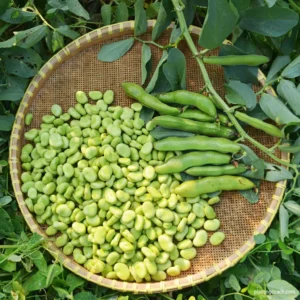
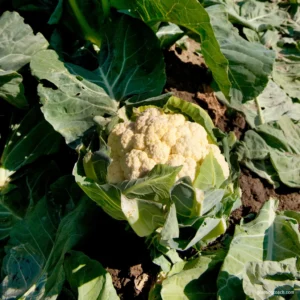
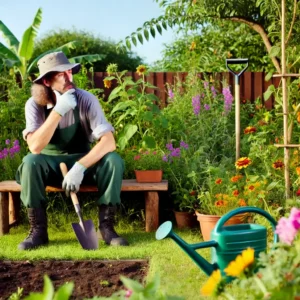

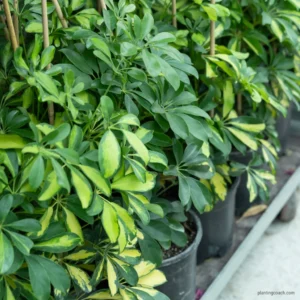
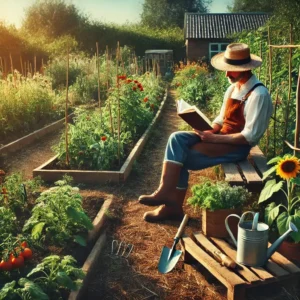
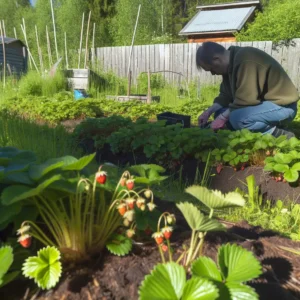
3 thoughts on “Best 8 Tips for Balcony Vegetable Gardening for Beginners”